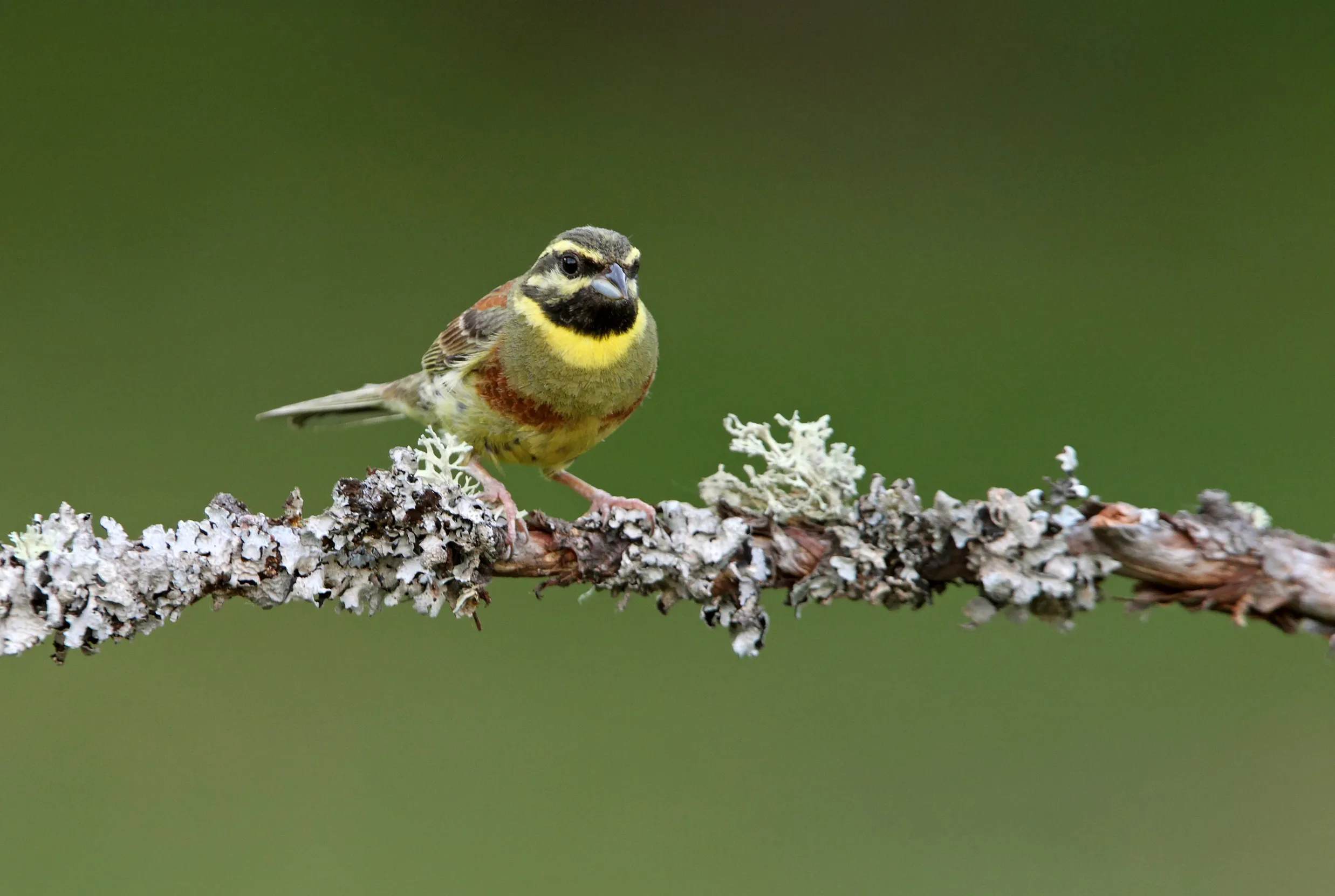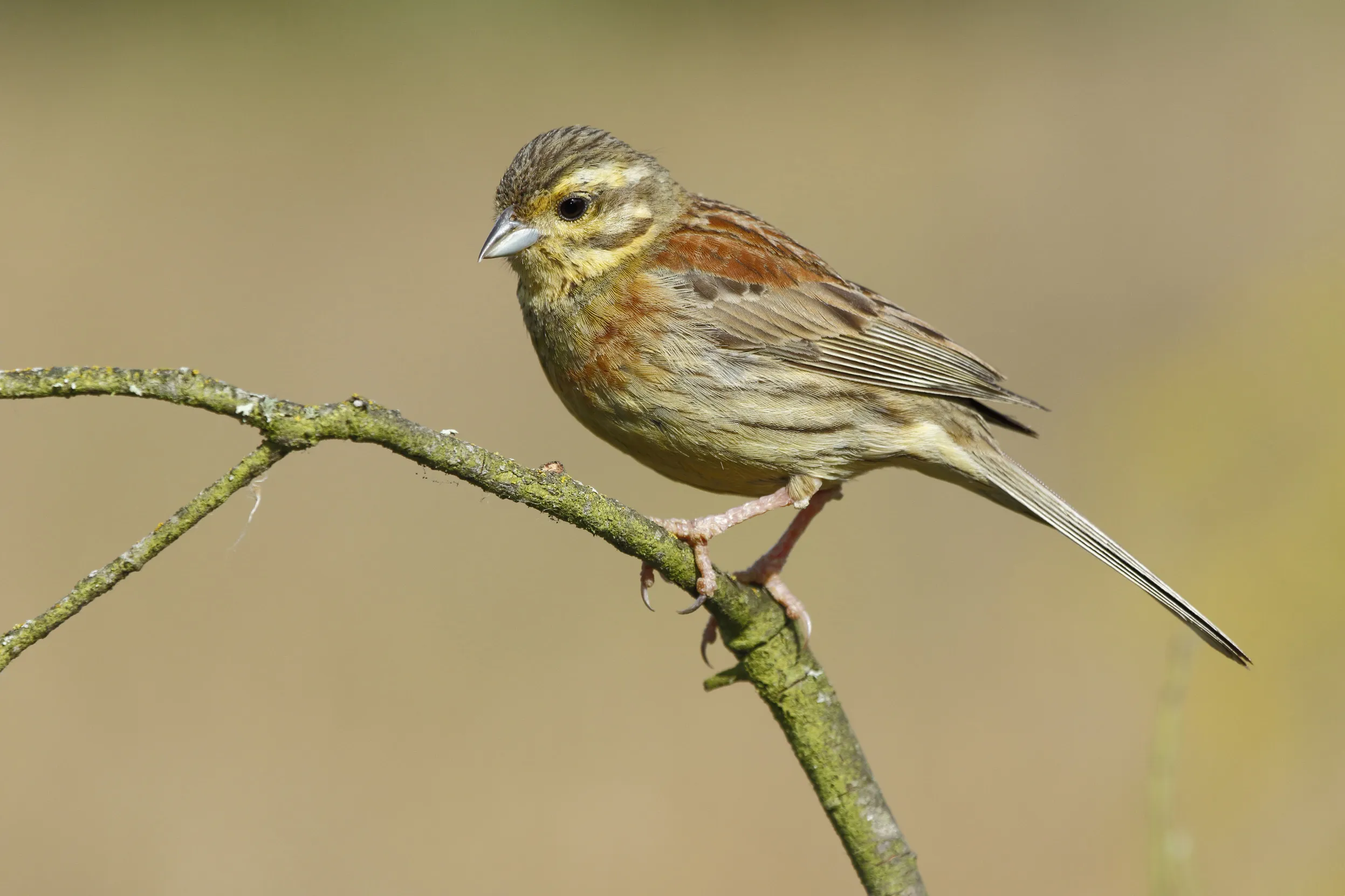
Cirl Bunting conservation - Advice for farmers
Once a common bird of farmland in Southern England, Cirl Buntings were almost lost from the UK during the 20th century.

On this page
Cirl Buntings in brief
Cirl Buntings are sparrow-sized buntings related to Yellowhammers. Both sexes have olive-green rumps (contrasting with the chestnut rump of the Yellowhammer). They can be elusive but males can be located when they sing - a brief, rapid, rattling trill.
Cirl Buntings pair up during the spring and summer when they will raise two to three broods between April and September. They occur in small flocks during winter, sometimes with other seed-eating Buntings and Finches.
Once a common bird of farmland in Southern England, Cirl Buntings were almost lost from the UK if it weren't for a small but stable population in Cornwall following a re-introduction, and there are signs of range recovery in a few other parts of Devon.
Key points
- Ensure weedy barley stubbles are left overwinter to provide a food source.
- Maintain unimproved/semi-improved/rough grassland and field margins for summer food.
- Maintain tall, thick hedgerows and scrub for nesting.
What this species needs
Food
Lots of seeds and invertebrates
Cirl Buntings need seeds in winter. Good sources are spilt cereal, the seeds of broad-leaved weeds from winter stubbles and weedy field margins.
In spring and summer, Cirl Buntings need invertebrates – grasshoppers are especially important food for chicks. Good feeding areas are semi-improved/unimproved grassland and rough grass field margins.
Safe nest sites
Thick hedges and scrub
Hedges should be thick and between 2-4m tall. Cirl Buntings’ favoured nesting sites are hedges that include Blackthorn, Hawthorn and other native species, and patches of dense scrub (gorse and bramble).
Land management changes which caused the decline of the Cirl Bunting are linked to loss of seed and insect food sources throughout the year. All the measures described on the helping Cirl Buntings page will encourage these birds and will also provide important habitats for other farmland wildlife. Many of these management options can be funded through agri-environment schemes.

How to help
Mixed farming
- Retain a mixed farm holding of pasture and arable fields with plenty of hedges and scrub. Cirl Buntings need their insect seed food sources and nest sites in a small area. They usually forage within 250m of their nest and in winter rarely travel more than 2km to find stubbles.
Arable management
- Grow spring barley as it provides a food source during the breeding season and provides the best stubbles.
- Keep barley stubbles overwinter as they are feeding sites for Cirl Buntings (and other seed-eating birds). Birds prefer stubbles with plenty of broadleaved weeds.
- Grow a barley-based wildlife seed mixture on suitably sited fields.
- Avoid using broad-spectrum insecticides in crops because insects are important for chick survival.
- Use selective herbicides to target weeds such as cleavers and barren brome. Spot-spray where possible.
Grassland management
- Graze grassland at a low intensity, preferably with cattle, to produce a mosaic of long and short grass and small areas of bare ground, which will be rich in invertebrates.
- Avoid re-seeding or planting trees on unimproved/semi-improved grassland (often found on the steeper slopes). Seek advice if in doubt.
- Top weeds such as thistles, nettles and dock, or spot-spray/weed wipe with specific herbicides. Areas left uncut in silage fields are very valuable, eg. margins.
- Grassland in orchards can be beneficial especially if managed to create a structured sward. Hay and grain fed to stock outside in winter can provide a rich source of seed.
Field margins
- Leave grassland strips around the boundaries of arable and silage fields. Avoid spraying with pesticides, herbicides and fertilisers. Cut only once every 2-3 years.
- Some arable fields will be suitable for uncropped field margins. These are cultivated but not sown, fertilised or sprayed. The resulting growth includes many broad-leaved arable plants and creates important feeding areas for Cirl Buntings.
Hedge and scrub management
- Trim hedgerows between October and March (ie. outside the breeding season). Maintain a height of 2-4m. Do not trim hedges annually – trim on a rotation once every 2-3 years, so that there are always some uncut hedges on the farm.
- Retain or allow to develop a mosaic of scrub (eg. Gorse and Bramble) and grassland.